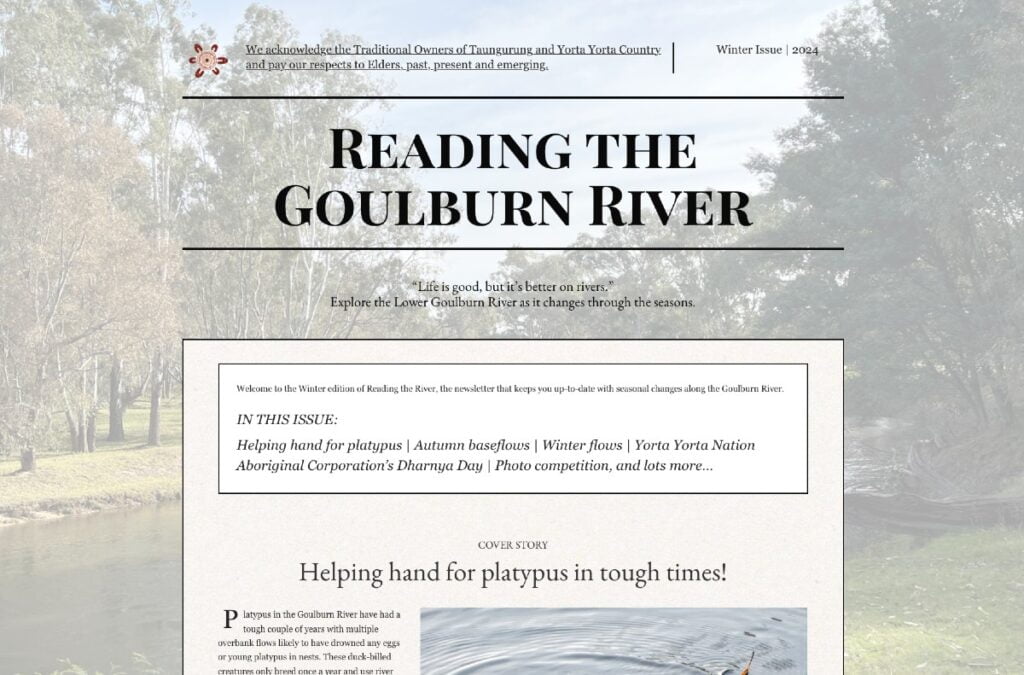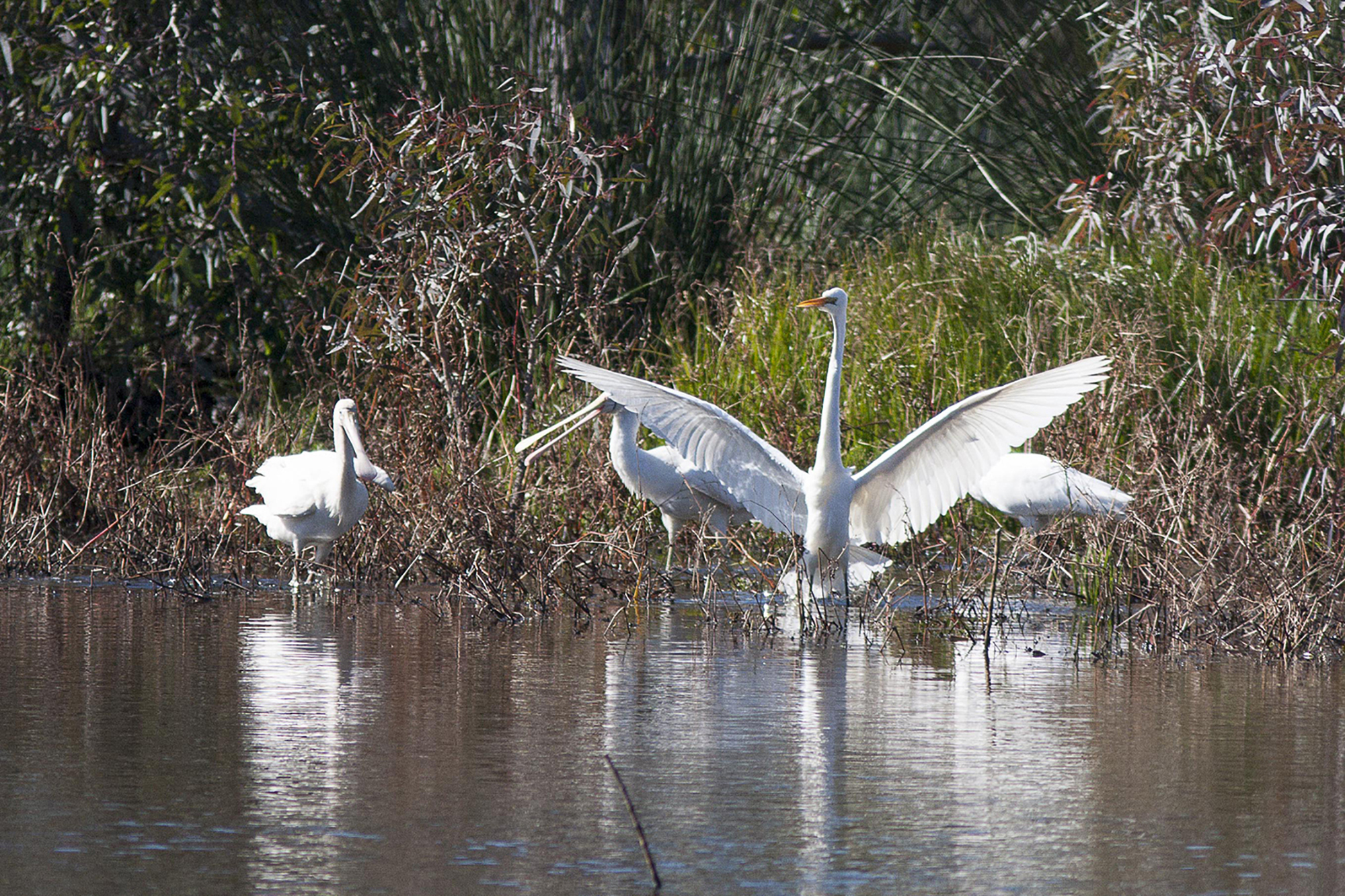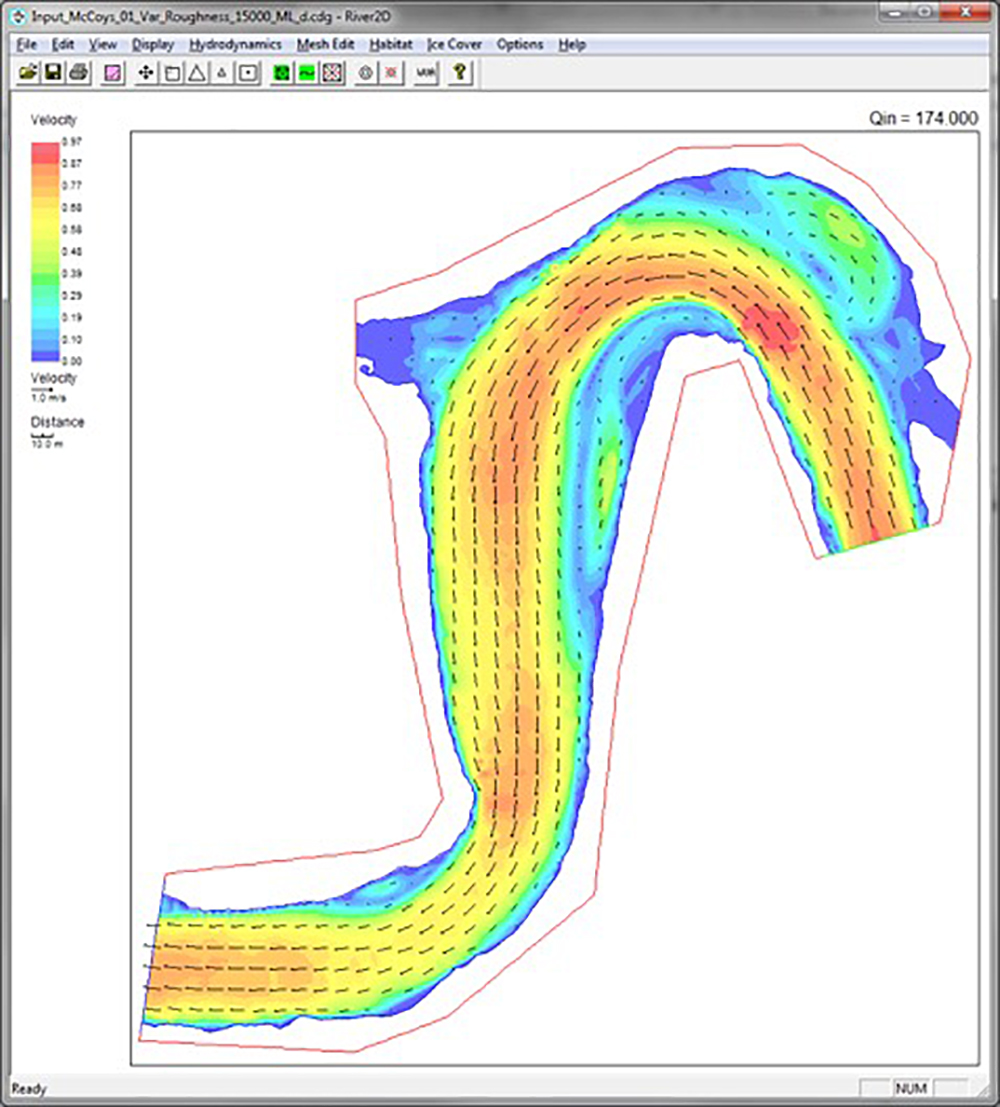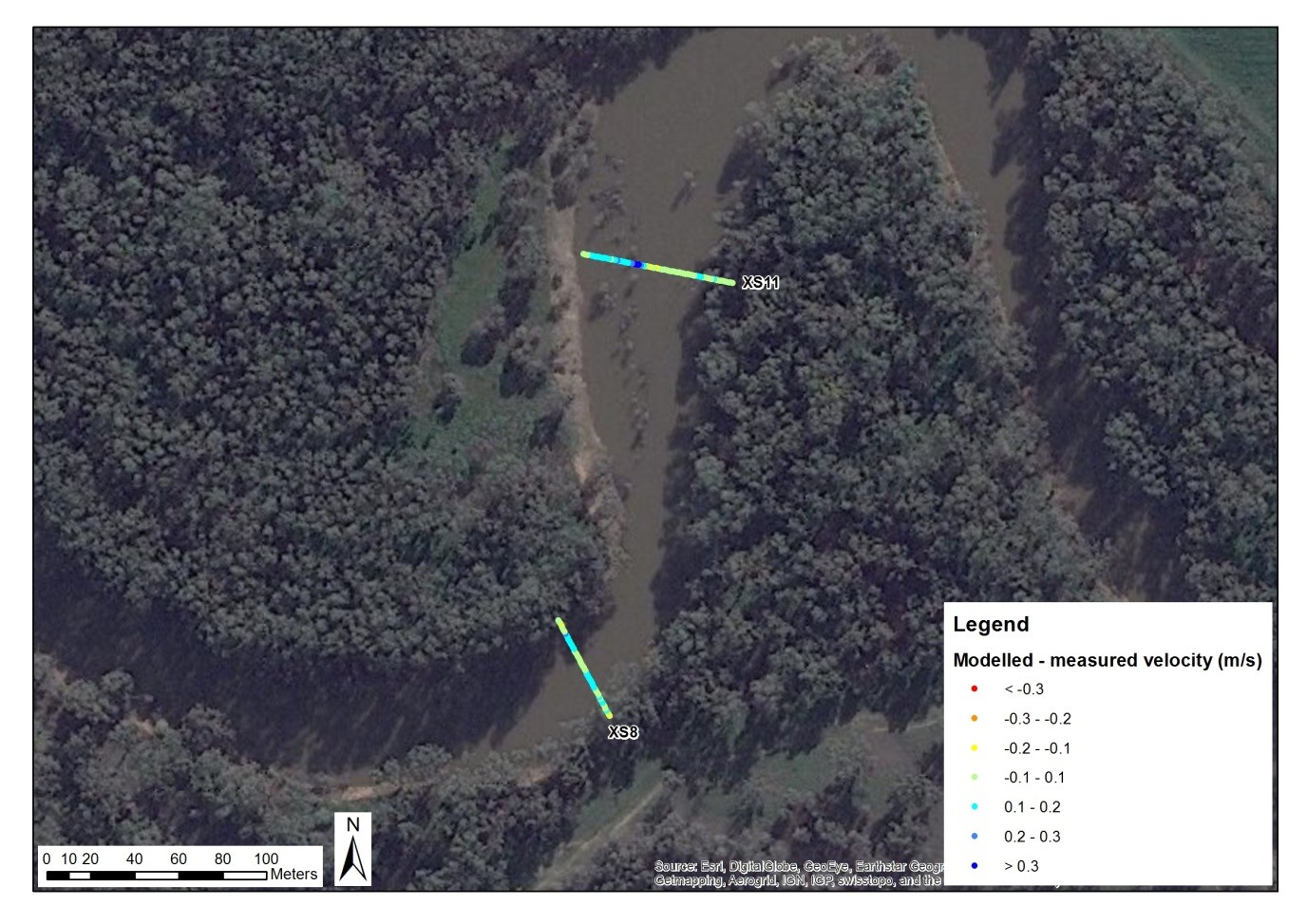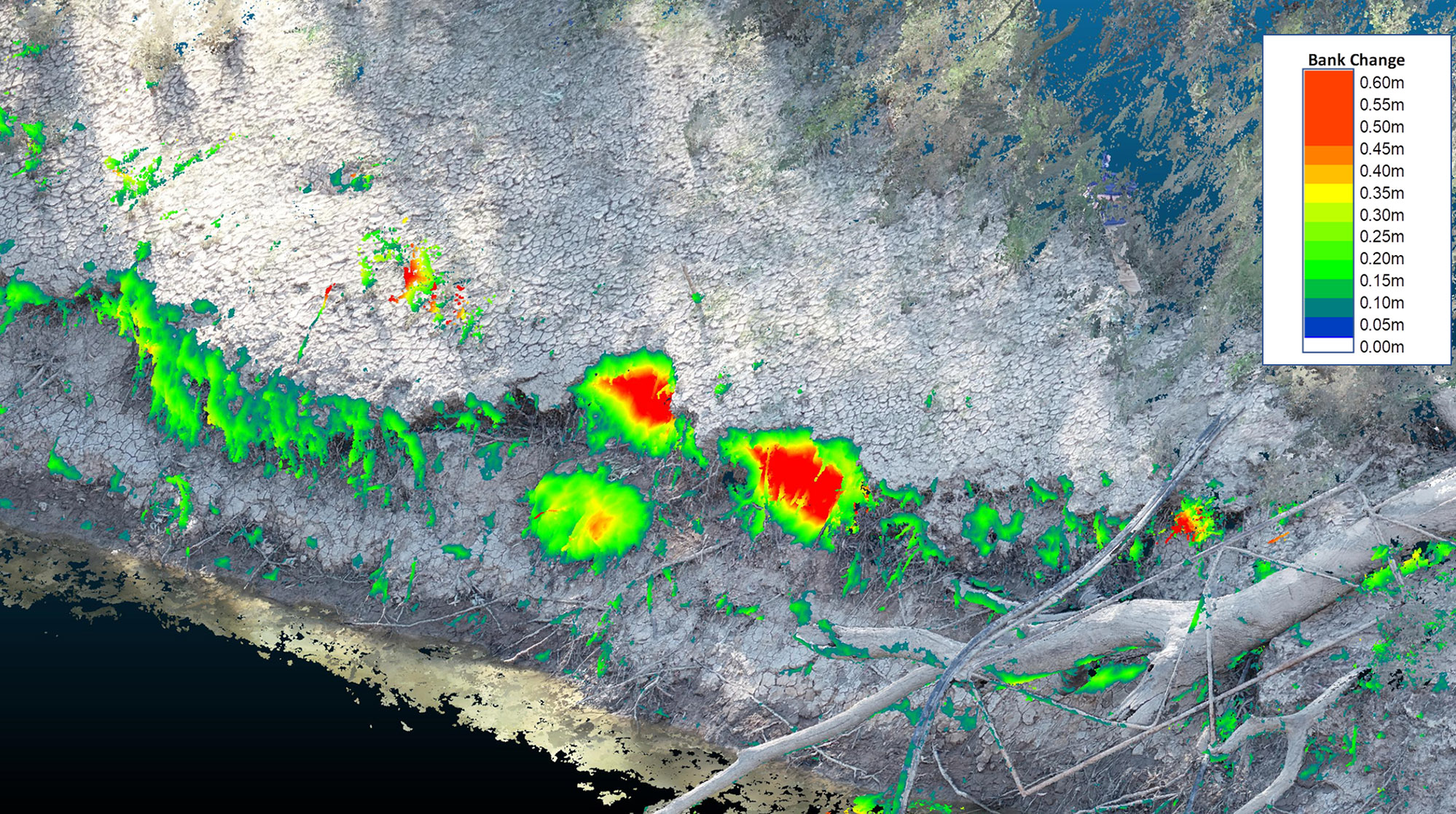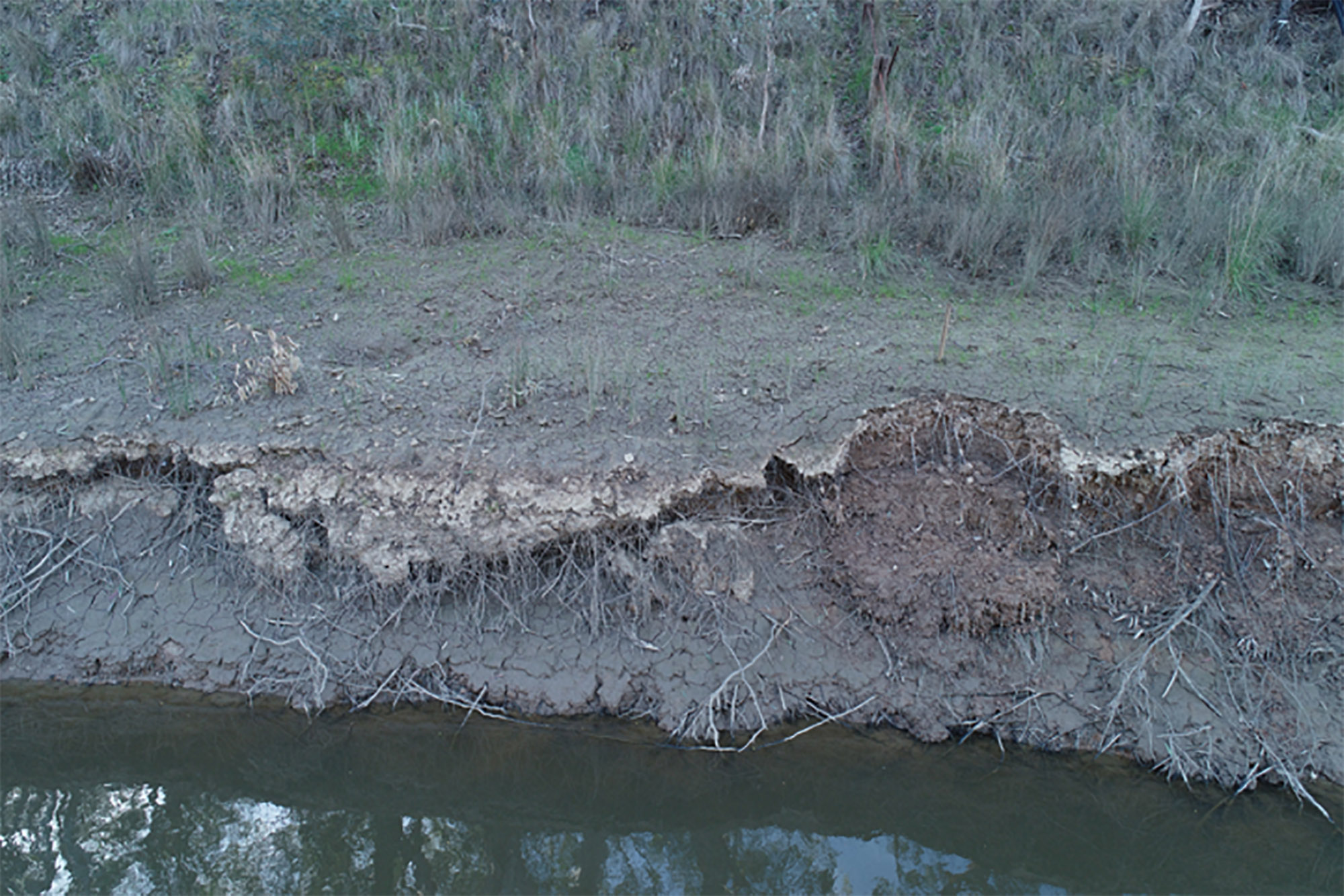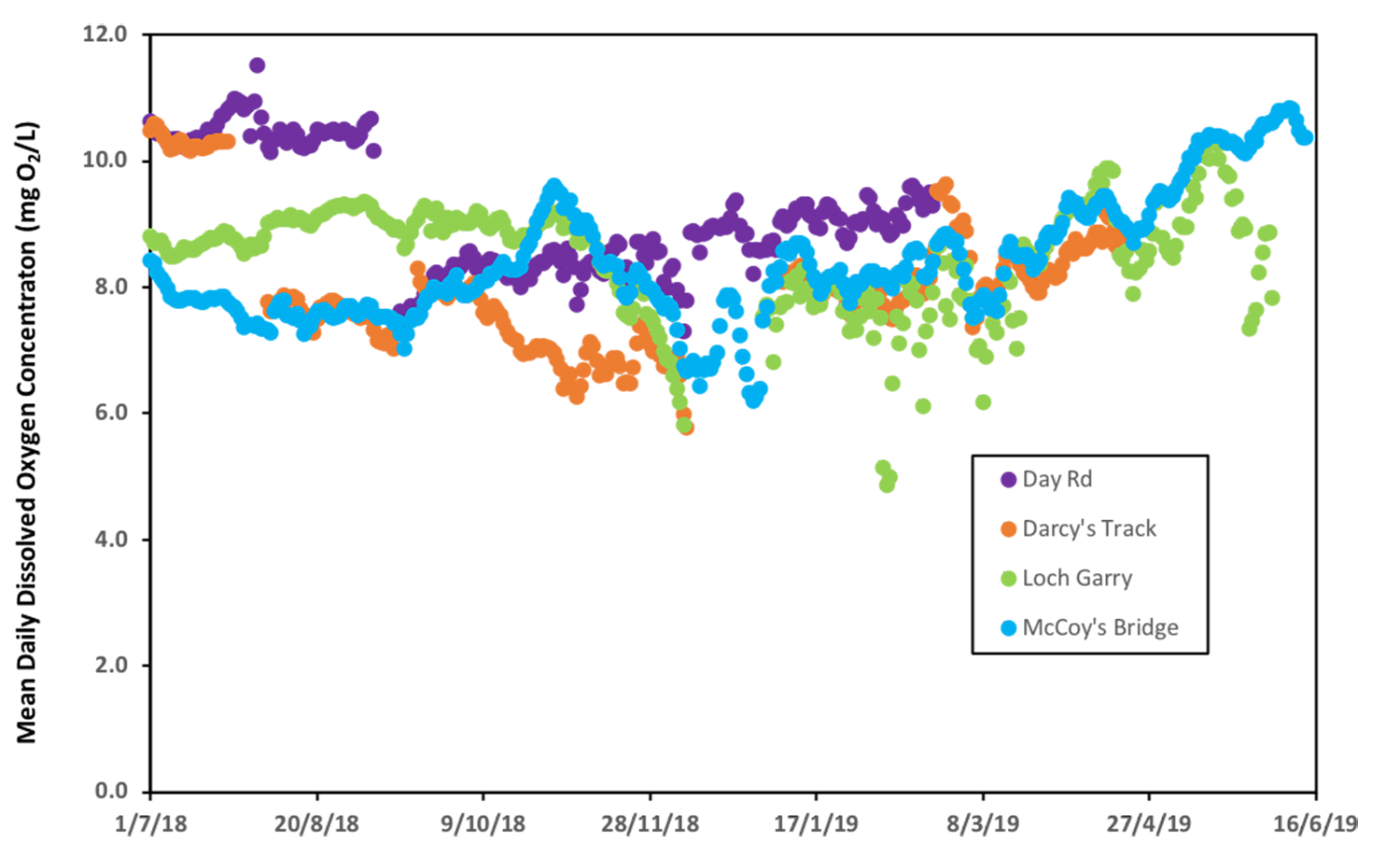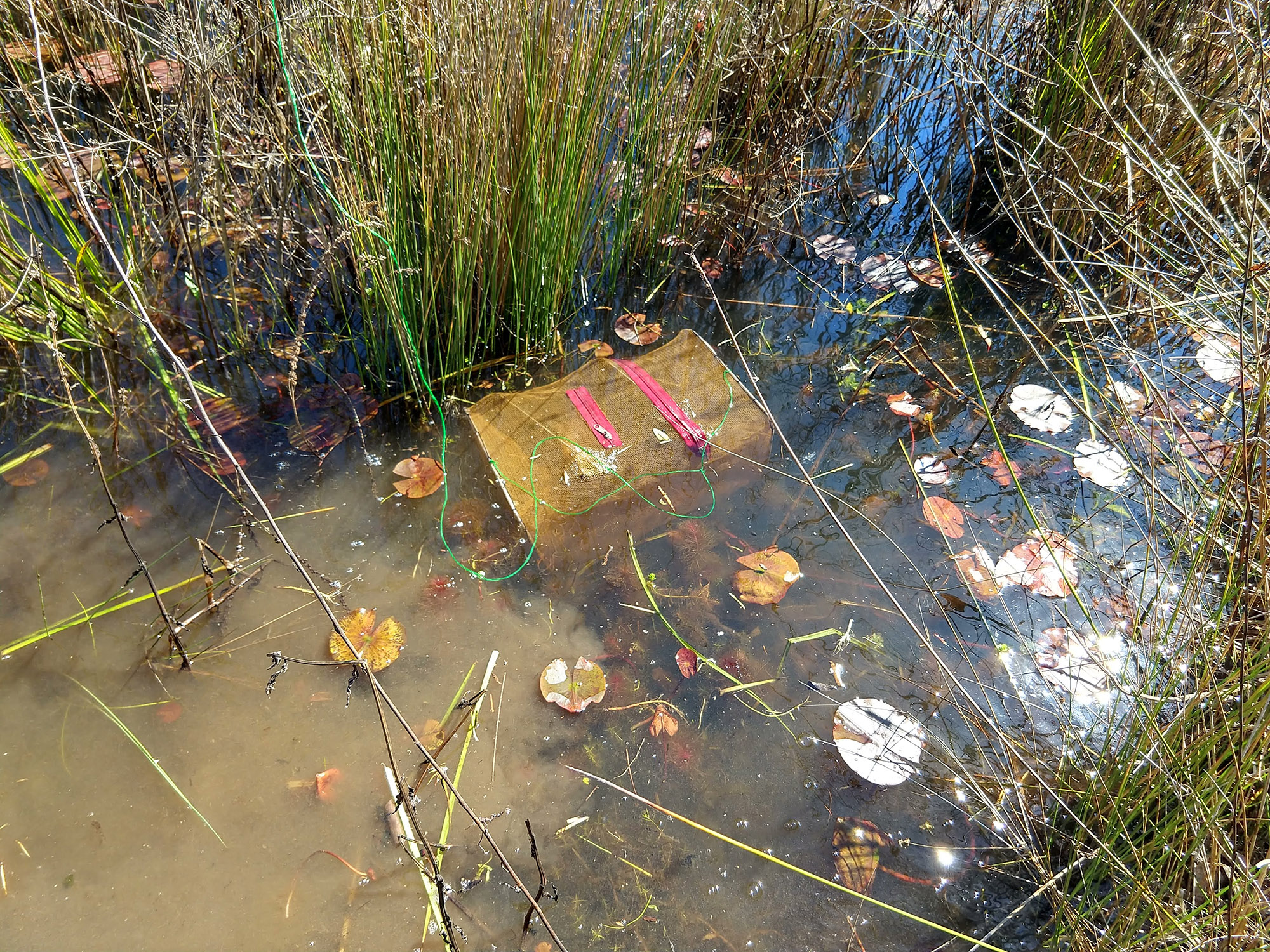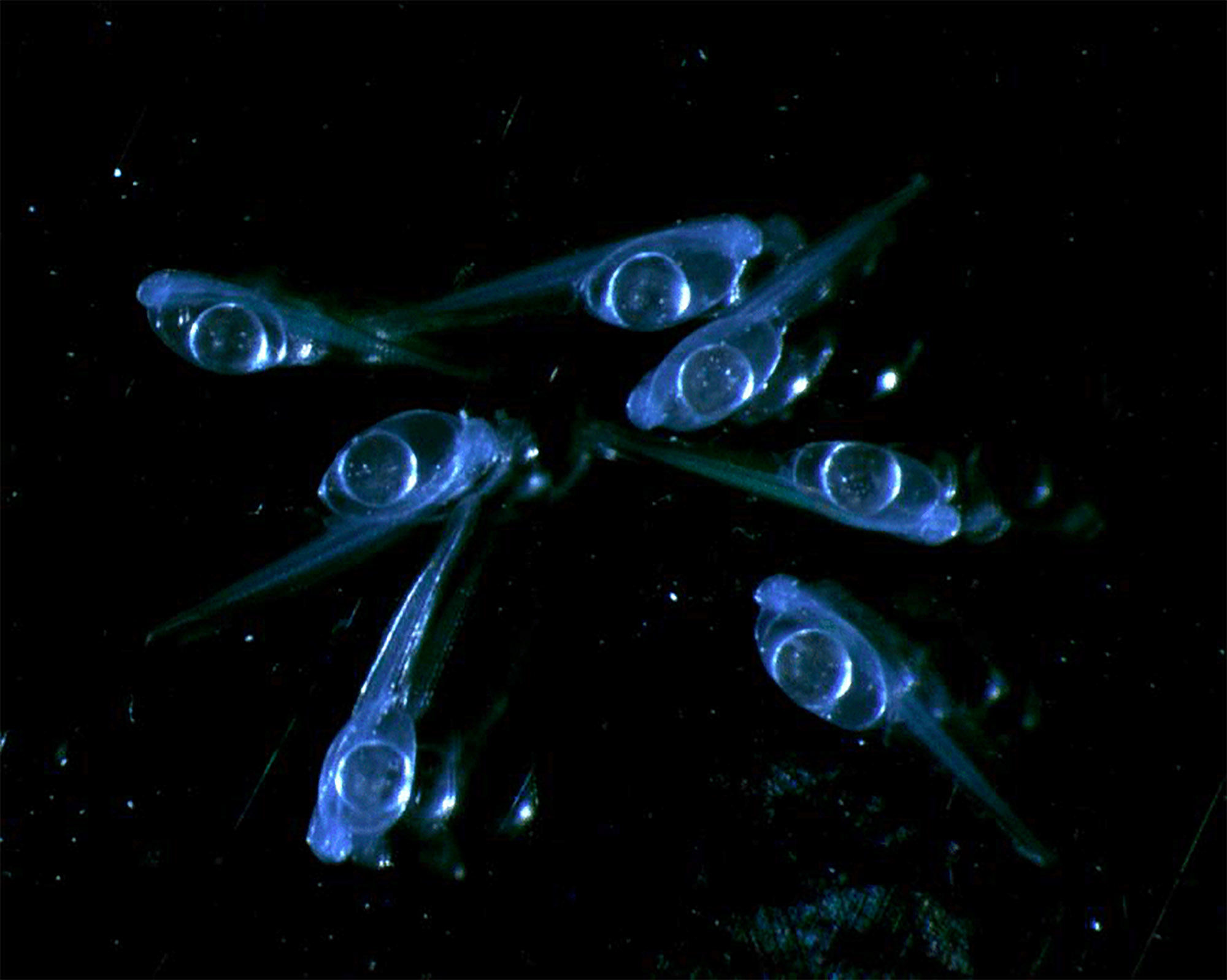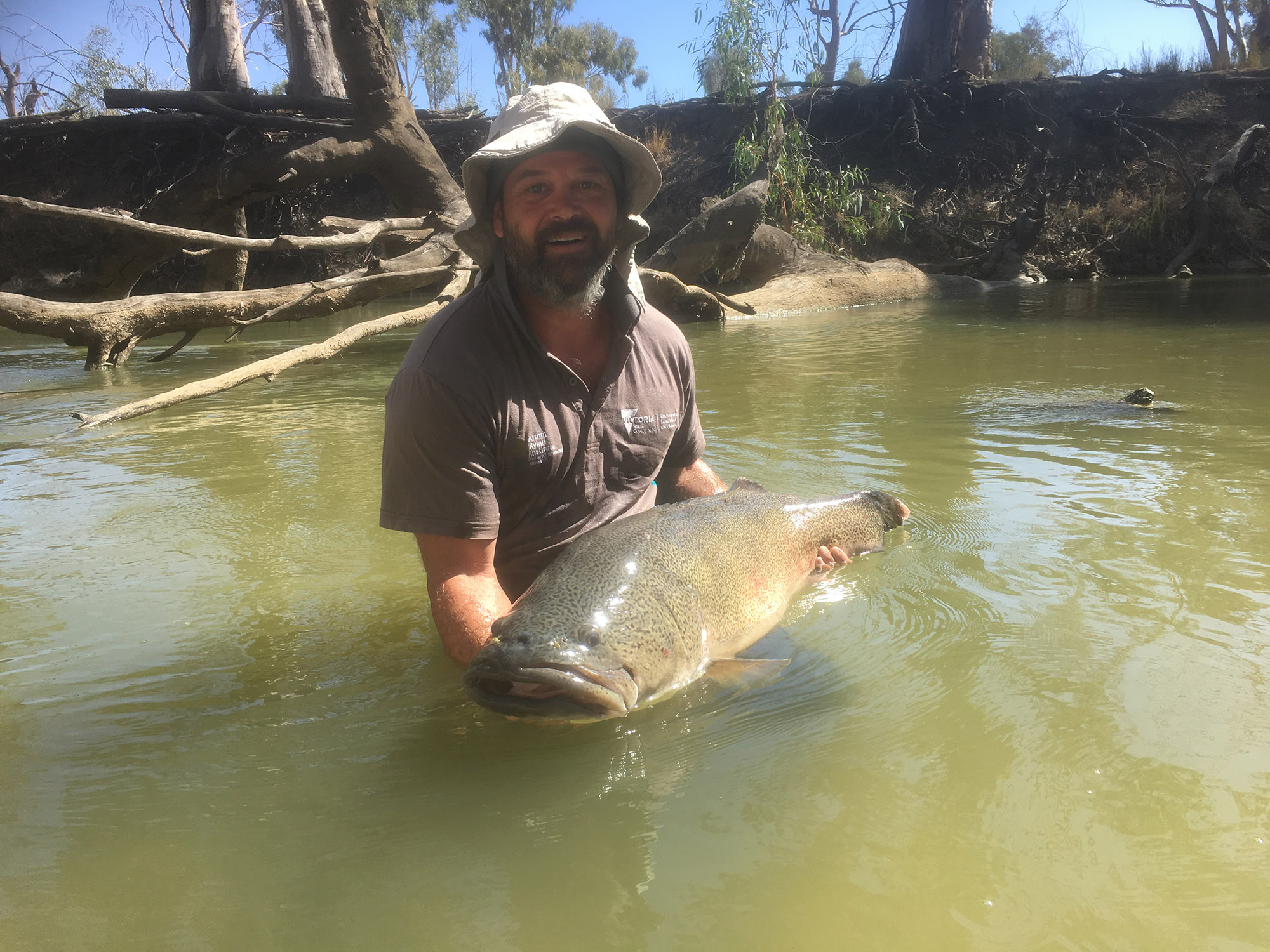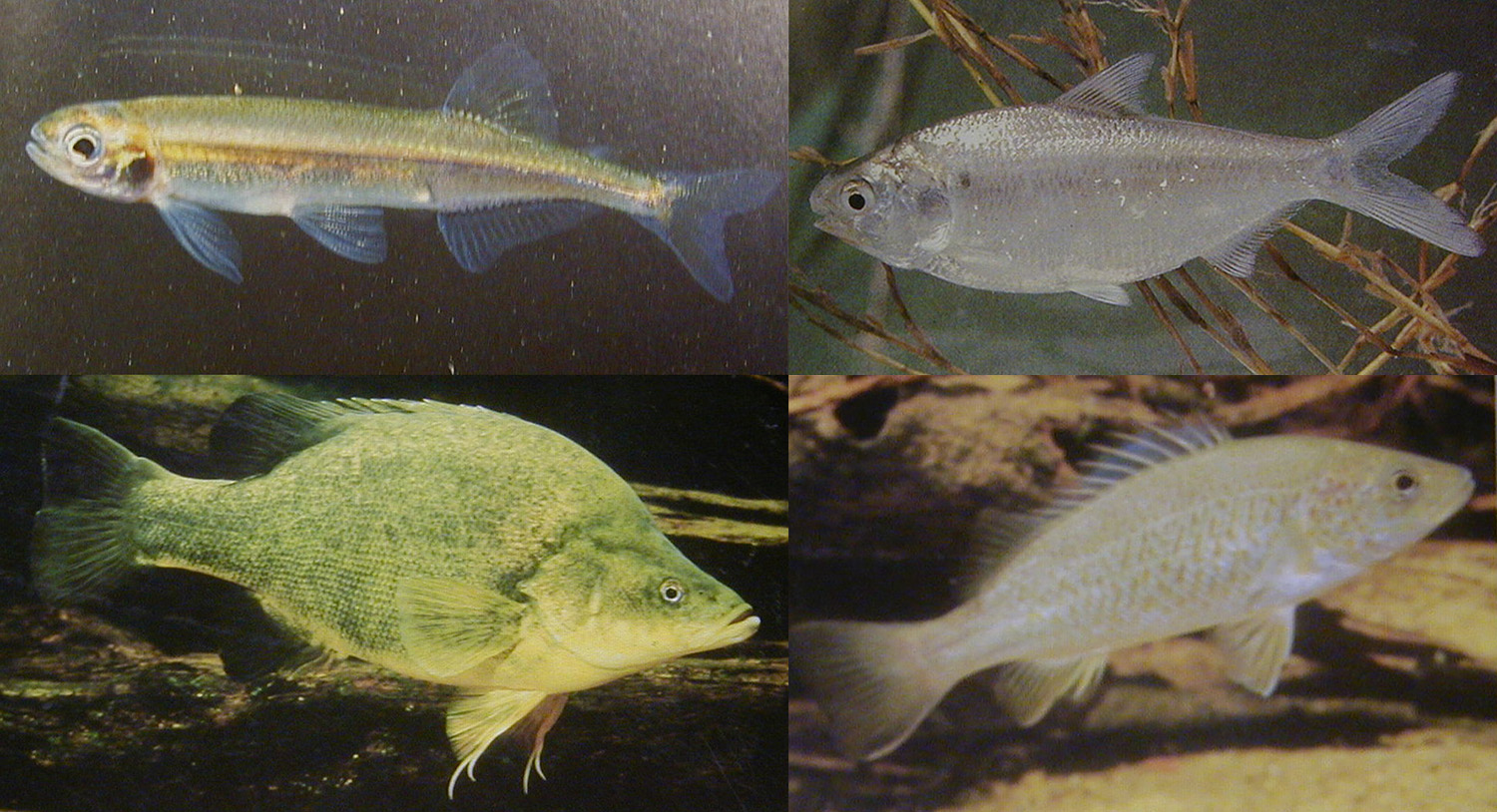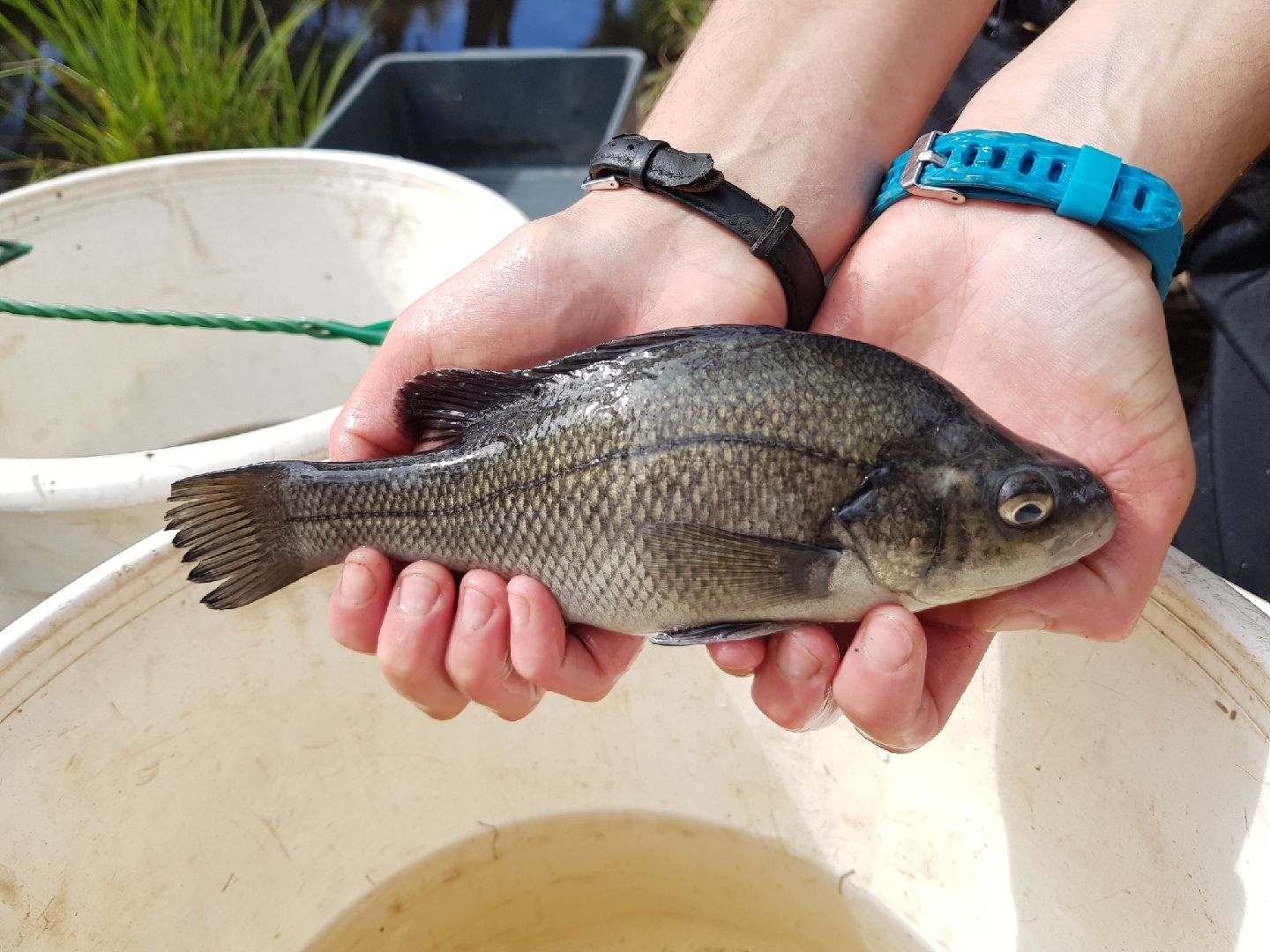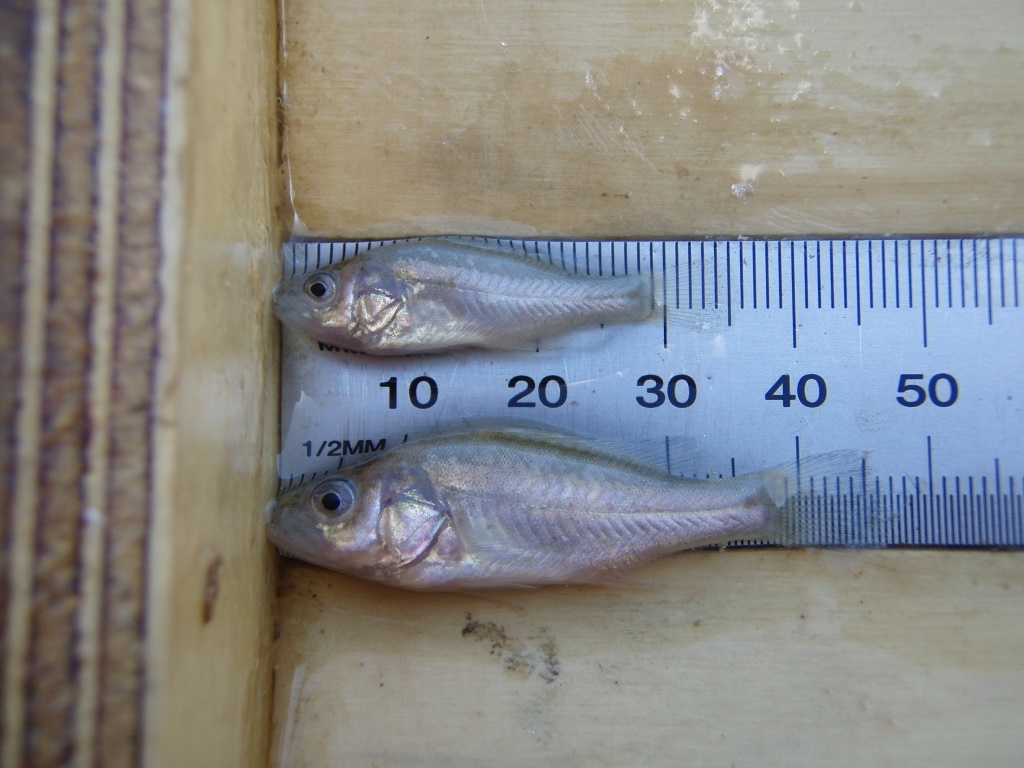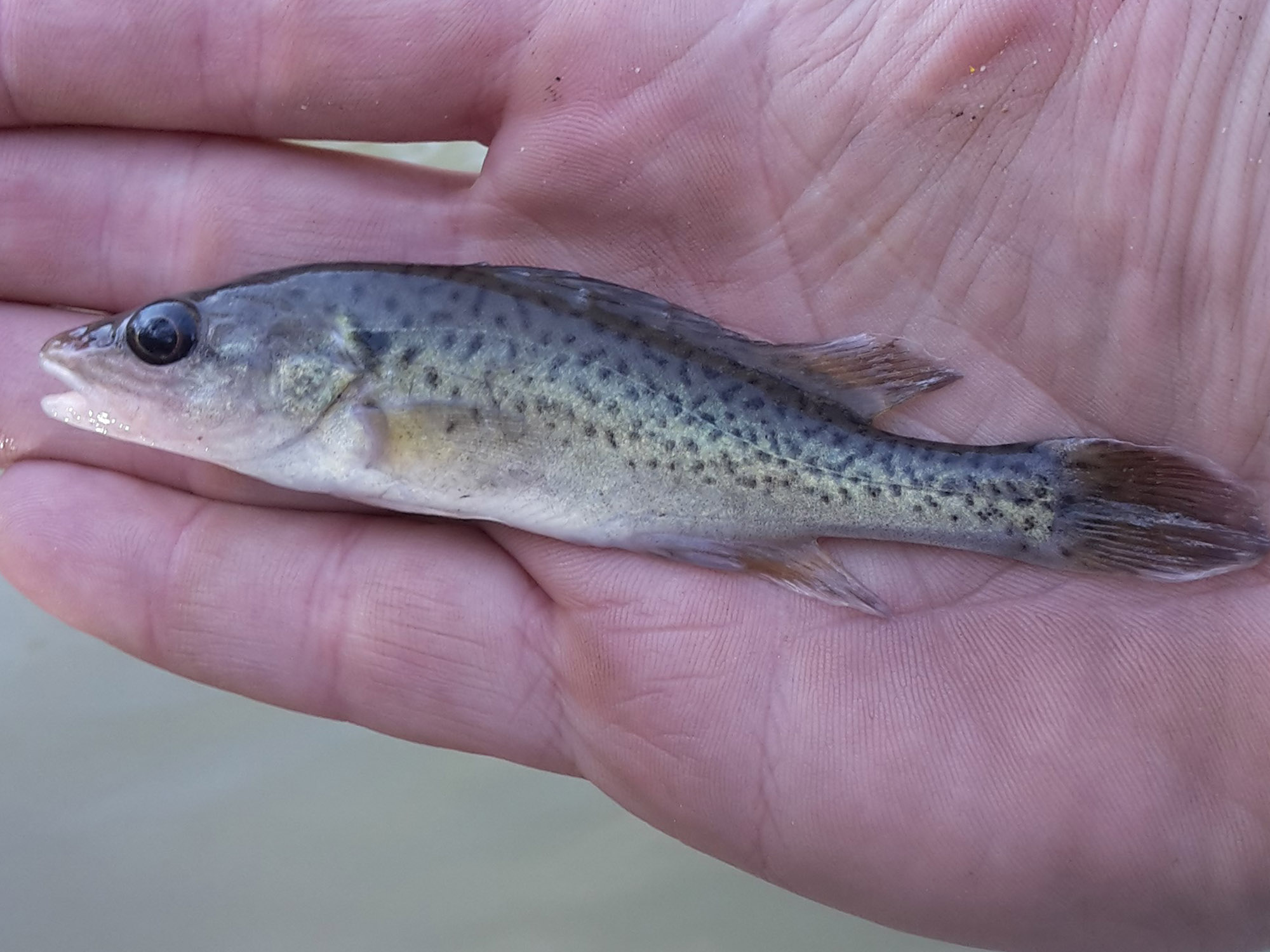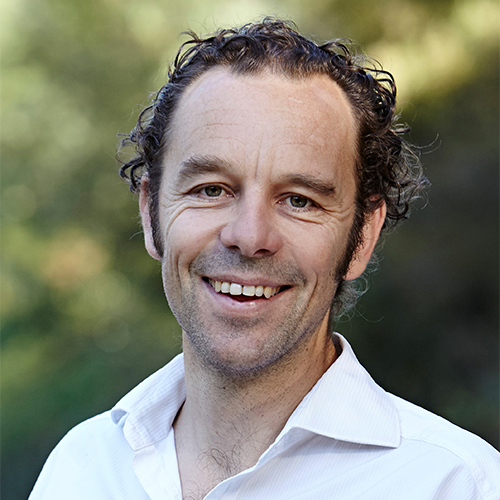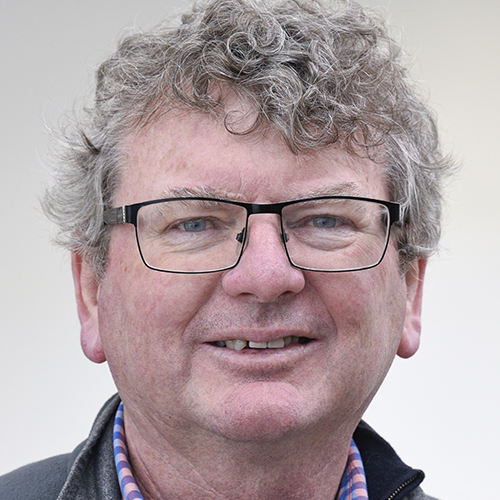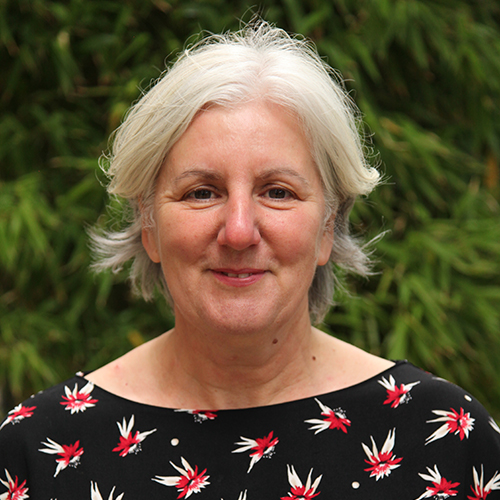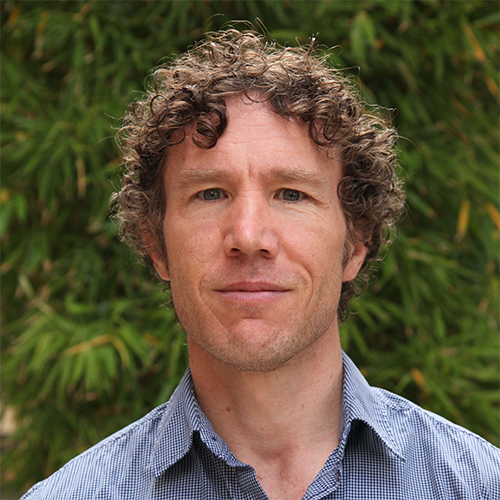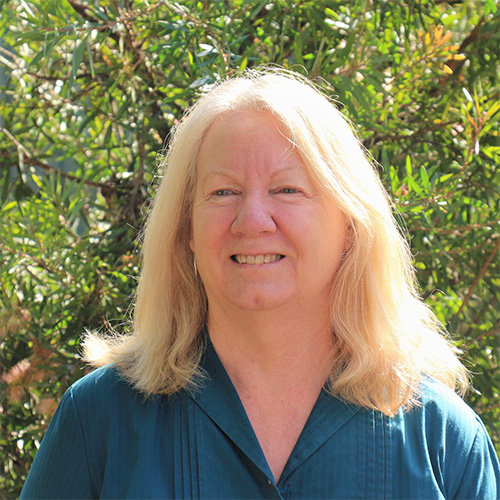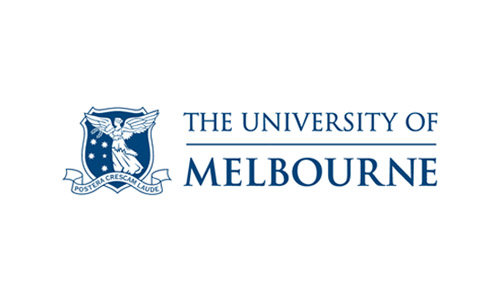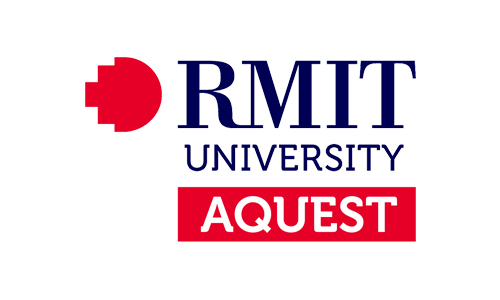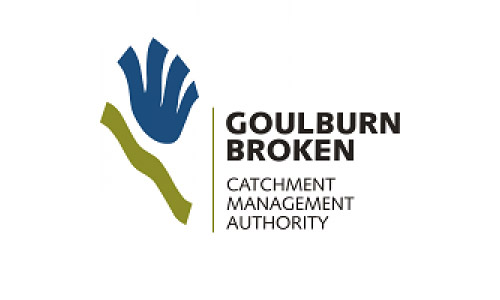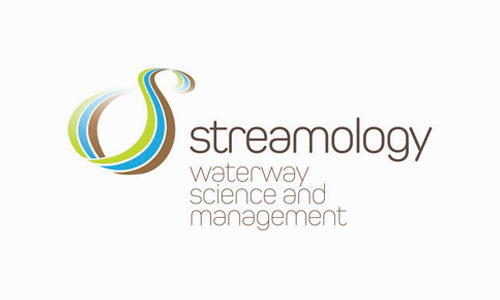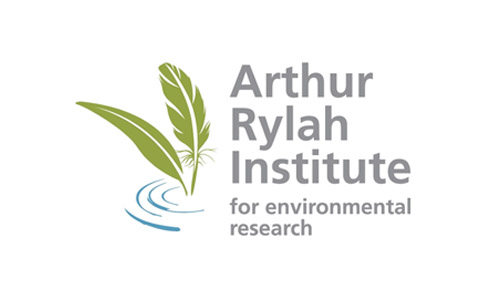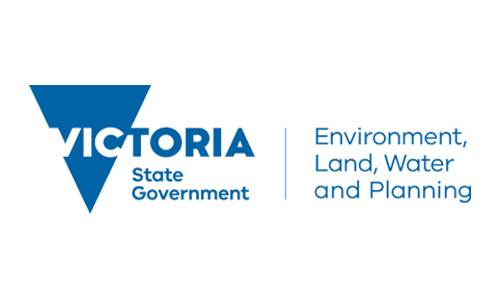The Lower Goulburn/Kaiela River stretches between the Goulburn Weir at Nagambie and the Murray River. This river holds great significance for the Yorta Yorta people, featuring in dreaming stories as the Kaiela. The river is home to important native fish populations, along with turtles and platypus. The Lower Goulburn/Kaiela River floodplain is dominated by River red gum forests and woodlands, providing habitat for numerous bird and mammals.
The river has been heavily regulated for farming and flood prevention. Although it occupies just 2% of the Murray Darling Basin, the Goulburn Broken Catchment region provides 11% of the Basin’s stream flow. At the headwaters lies Lake Eildon. With a capacity of 3334 GL (3334 billion litres), Lake Eildon is the second-largest storage in the Murray-Darling Basin, only slightly smaller than Lake Dartmouth on the Mitta Mitta River. It is also almost seven times the capacity of Sydney Harbour (~500 GL). Lake Eildon stores runoff from the Victorian Alps primarily to support irrigated agriculture during the growing season (generally August to May). In the mid-reaches of the river, the Goulburn Weir regulates flow into the East Goulburn Main Channel and Warranga Channel, both of which supply the network of irrigation canals in the Goulburn, Campaspe and Loddon catchments. Below Goulburn Weir the river is not regulated, but levies and block banks have been built to reduce flooding of the Lower Goulburn/Kaiela River floodplain.
The regulation of flows provided by all this infrastructure has had significant impacts on the flora and fauna of the Lower Goulburn/Kaiela River. Like many parts of the Murray-Darling Basin, native fish numbers are at about 10-20% of pre-European settlement levels. Instream vegetation has all but disappeared. Bankside vegetation has come and gone with droughts and floods, and there is the sustained challenge of the delivery of irrigation trade water down the Goulburn/Kaiela River during summer. These flows are called Inter-Valley Transfers, and are resulting in un-seasonally high summer flows.
The Flow-MER Program in the Lower Goulburn/Kaiela River is conducting monitoring to understand how the environment of the river is responding to environmental and consumptive water flows. We are monitoring at 19 sites spread across the 220 km of the Lower Goulburn/Kaiela River. We then use that information in an adaptive management program to constantly improve the management of water in the river to try to strike a balance between human and environmental uses of water.

